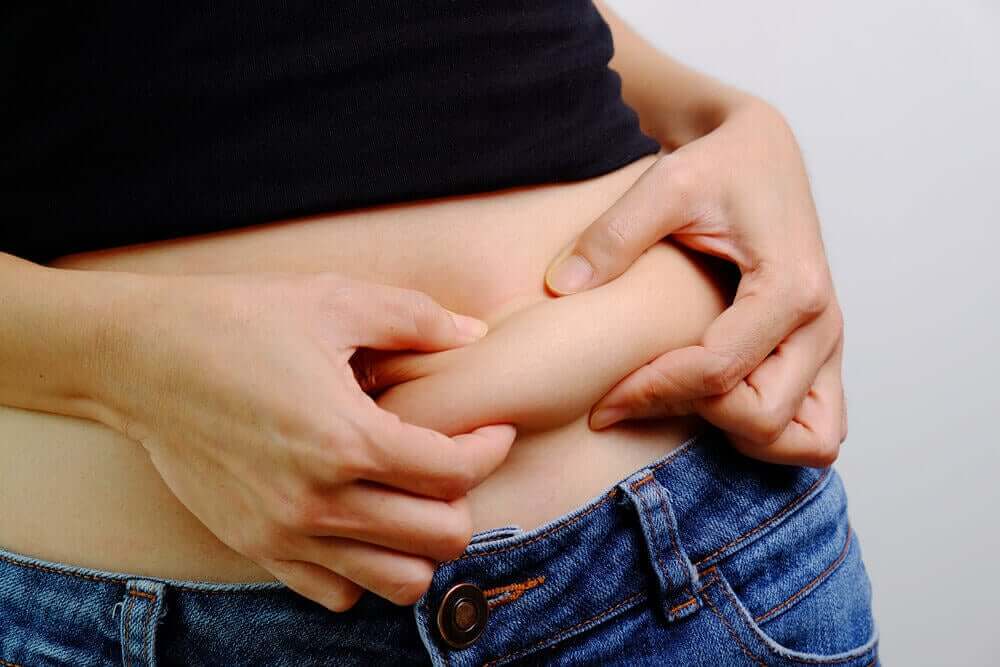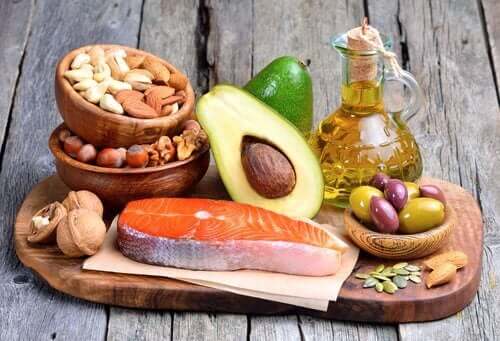Are There Foods that Help Burn Localized Fat?


Written and verified by the pedagogue in physical education and nutritionist Elisa Morales Lupayante
In recent years, there’s been a growing interest among people in methods to lose “localized fat”. Due to the appearance of fat burning products, miracle diets and certain training plans, many have come to believe that it’s possible to specifically reduce the fat that accumulates in certain parts of the body.
But how true is this,? And are there foods that help us to get rid of localized fat? Answering these questions allows us to find effective ways to combat the accumulation of fat and shape your figure. That’s why we want to address this topic in detail below.
Read this article too: How to Reach Later Life in Good Health
Foods that burn localized fat: What you need to know

Good nutrition’s key to a healthy and balanced weight. In fact, research published in the Journal of the American Dietetic Association concludes that increasing the consumption of fruits, vegetables, and low-fat dairy products contributes to weight loss and weight maintenance.
However, with respect to diet and weight loss, there are dozens of myths that have even put people’s health at risk. Thus, for example, we find the idea that consuming certain types of food helps shed localized fat in specific areas of the body, such as the abdomen, arms, or legs.
However, there’s no evidence to support this fact and, therefore, it’s one of the many beliefs that must be banished. In fact, research indicates that not even physical exercise can achieve this. Although physical training helps to reduce fat accumulation, there’s no evidence that it does so in a localized way.
Whether a person tends to gain or lose fat in certain regions of their body depends largely on genetics, gender, and age. For example, as explained in Current Opinion in Clinical Nutrition & Metabolic Care, men tend to accumulate fat in the abdominal area, while women tend to accumulate fat in the legs and hips during their childbearing years.
In the case of women, after the age of 40, some begin to accumulate fat in the abdominal region. However, as we’ve already mentioned, this is something that may vary from one woman to another due to the genetic factors involved.
You might be interested in reading: 6 Health Benefits of Extra Virgin Olive Oil
Foods you can include in your diet to lower fat accumulation

Although foods don’t have a “miraculous” effect on fat accumulation, there are some that, due to their nutritional properties, can help reduce it. Of course, this is as long as it’s supported with an exercise routine and healthy habits.
Also, as mentioned above, they won’t produce localized fat reduction. You may notice the difference in one area of your body or another, but you can’t pick and choose where the reduction will take place. Just the same, be sure to include these foods in your diet!
- Low-fat dairy products: This group includes skim milk, yogurt and low-fat cheese. They’re all high in calcium, which will help break down fat cells.
- Citric fruits: Some citric fruits, such as oranges, grapefruits and lemons, contain high levels of vitamin C. They help the body process fat faster and help regulate insulin, which is a condition that causes weight gain.
- Melon: Rich in potassium, this fruit regulates sodium levels and helps get rid of bloating problems.
- Walnuts: Thanks to their high omega-3 content, walnuts help reduce stress hormone levels, such as cortisol. These hormones contribute to weight gain. You should eat them in moderation.
- Almonds: These nuts are rich in proteins, calcium, fiber and omega-3, which make them a great source of energy.
- Oats: Oats have high levels of fiber and protein that help lower cholesterol levels.
- Salmon: Eating this fish has a high concentration of omega-3 and proteins that help form good cholesterol (HDL).
- Olive oil: Olive oil is rich in unsaturated fats that’s healthy for your body. It also helps your body absorb nutrients and lower cholesterol levels.
What else can you do?
Although food doesn’t have the ability to lower localized fat, proper nutrition can contribute to weight loss. Therefore, in addition to taking into account what we’ve recommended, try to consult your nutritionist to get a personalized diet according to your needs.
All cited sources were thoroughly reviewed by our team to ensure their quality, reliability, currency, and validity. The bibliography of this article was considered reliable and of academic or scientific accuracy.
- Champagne CM, Broyles ST, Moran LD, et al. Dietary intakes associated with successful weight loss and maintenance during the Weight Loss Maintenance trial. J Am Diet Assoc. 2011;111(12):1826–1835. doi:10.1016/j.jada.2011.09.014
- Roby, F. B. (1962). Effect of exercise on regional subcutaneous fat accumulations. Research Quarterly of the American Association for Health, Physical Education and Recreation. https://doi.org/10.1080/10671188.1962.10613202
- Aguilar-Salinas, C. A. (2007). Mesa redonda XXV. Adiposidad abdominal como factor de riesgo para enfermedades crónicas. Salud pública de México, 49, 311-316.
- Bouza, A., Bellido, D., Rodríguez, B., Pita, S., & Carreira, J. (2008). Estimacíon de la grasa abdominal visceral y subcutánea en pacientes obesos a través de ecuaciones de regressíon antropométricas. Rev Esp Obes, 6(3), 153-62.
- Pérez Miguelsanz, M., Cabrera Parra, W., Varela Moreiras, G., & Garaulet, M. (2010). Distribución regional de la grasa corporal: Uso de técnicas de imagen como herramienta de diagnóstico nutricional. Nutrición Hospitalaria, 25(2), 207-223.
- Blaak, E. (2001). Gender differences in fat metabolism. Current Opinion in Clinical Nutrition and Metabolic Care. https://doi.org/10.1097/00075197-200111000-00006
This text is provided for informational purposes only and does not replace consultation with a professional. If in doubt, consult your specialist.








